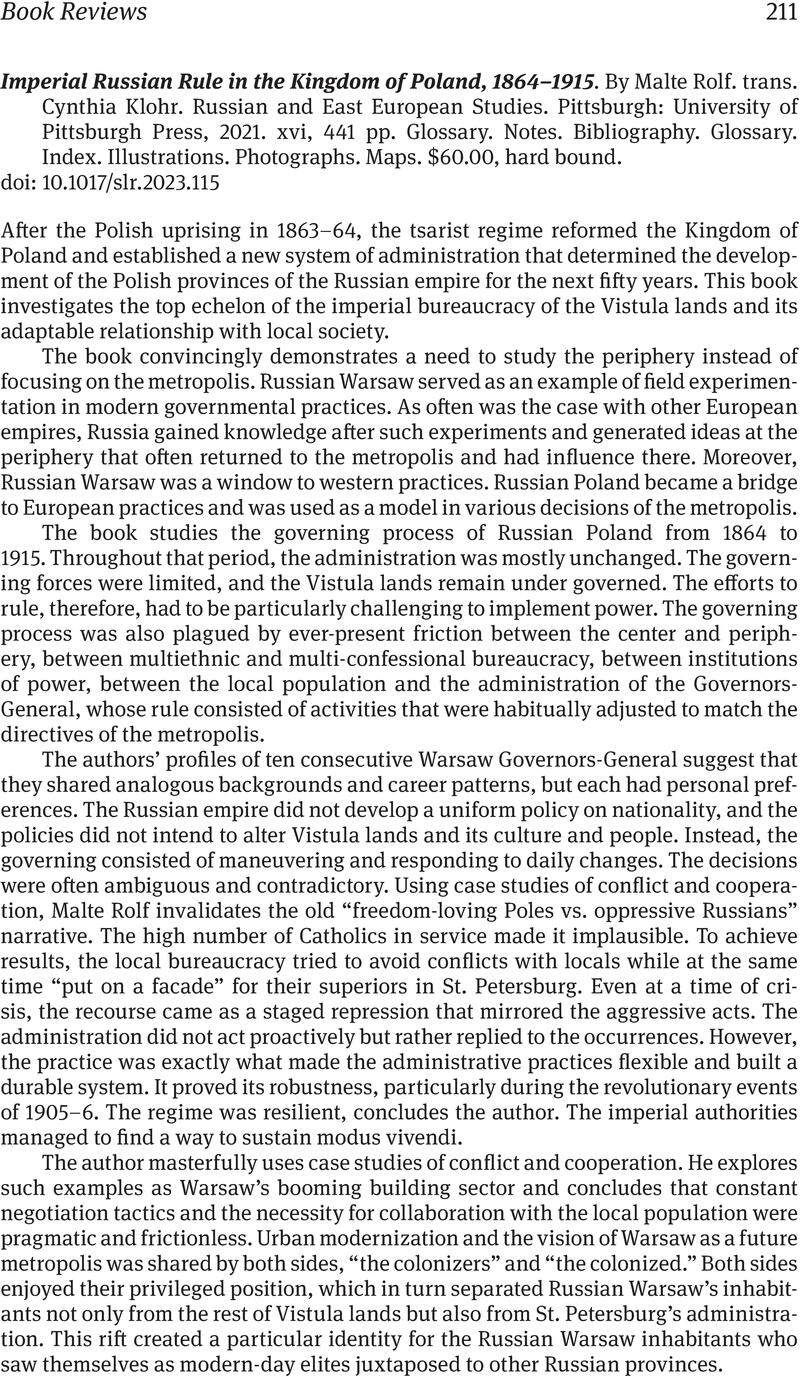No CrossRef data available.
Article contents
Imperial Russian Rule in the Kingdom of Poland, 1864–1915. By Malte Rolf. trans. Cynthia Klohr. Russian and East European Studies. Pittsburgh: University of Pittsburgh Press, 2021. xvi, 441 pp. Glossary. Notes. Bibliography. Glossary. Index. Illustrations. Photographs. Maps. $60.00, hard bound.
Review products
Imperial Russian Rule in the Kingdom of Poland, 1864–1915. By Malte Rolf. trans. Cynthia Klohr. Russian and East European Studies. Pittsburgh: University of Pittsburgh Press, 2021. xvi, 441 pp. Glossary. Notes. Bibliography. Glossary. Index. Illustrations. Photographs. Maps. $60.00, hard bound.
Published online by Cambridge University Press: 03 August 2023
Abstract
An abstract is not available for this content so a preview has been provided. Please use the Get access link above for information on how to access this content.

- Type
- Book Review
- Information
- Copyright
- Copyright © The Author(s), 2023. Published by Cambridge University Press on behalf of the Association for Slavic, East European, and Eurasian Studies


